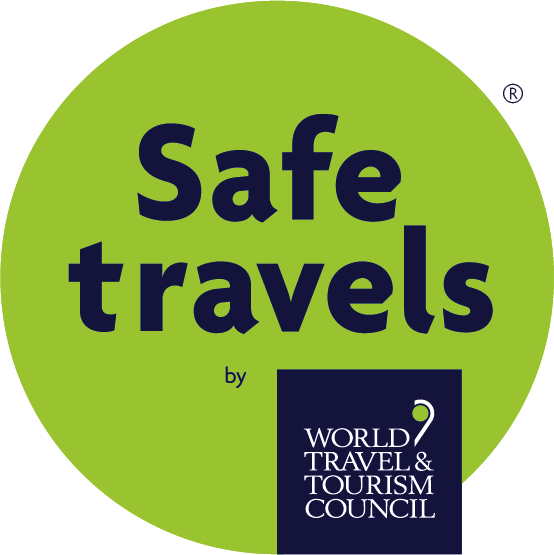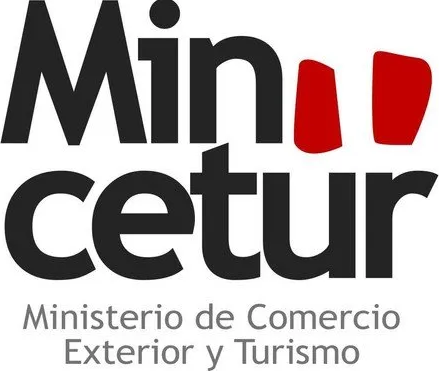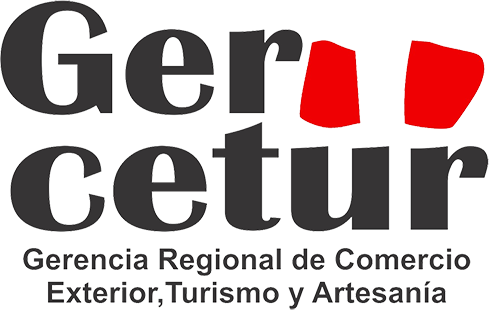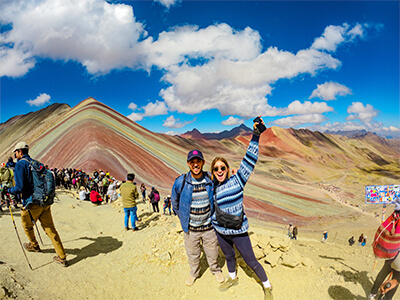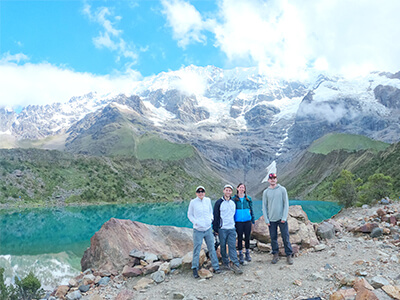-
Free Call +51 961 940 225
-
Online Support mail@example.com
-
Online Location Online Location
- Enquire Now
Super Sacred Valley Tour
Full Day Tour
-
-
Group Size Max 12
-
Activity Level Moderate
-
Trip Type Journeys
-
Accommodation None
-
- BOOK NOW
Embark on a captivating journey through the Sacred Valley, a region brimming with historical significance and natural beauty. Our Sacred Valley Tour offers an immersive experience, taking you to four fascinating destinations: Pisac, Moray, Maras, and Ollantaytambo. Join us on this full-day adventure as we unravel the secrets of the powerful Inca Empire and discover the picturesque landscapes of the Sacred Valley.
Itinerary
Cusco - Textile Palace - Pisaq - Urubamba - Maras Moray - Salt Mines - Ollantaytambo
Our adventure begins with an early morning pick-up at approximately 07:30 hrs from your accommodation in Cusco. From there, we will embark on a full day of exploration, visiting some of the most important and beautiful sites in the Sacred Valley.
As we make our way to the first stop, the town of Pisac, we’ll be treated to breathtaking views of the Sacred Valley from various lookout points. The picturesque landscapes will leave you in awe, setting the stage for an unforgettable day.
Our first stop is the town of Pisac, known for its vibrant traditional market. Here, local artisans showcase their colorful merchandise, making it the perfect opportunity for souvenir shopping. Immerse yourself in the vibrant culture and take home a piece of the Sacred Valley’s rich heritage.
Continuing in Pisac, we’ll explore the town’s main archaeological site, where our knowledgeable guide will introduce you to the intriguing history of the Inca Empire. Marvel at the ancient ruins and gain insights into the lives of the Inca civilization.
After a delightful morning in Pisac, we’ll head to the town of Urubamba for a well-deserved lunch break. Here, you’ll have the option to choose from a variety of local restaurants to savor delicious Peruvian cuisine. Enjoy the culinary delights and recharge for the next leg of our journey.
Post-lunch, we’ll venture to the archaeological site of Moray, a unique complex of deep, circular terraces believed to have been used for agricultural purposes by the Inca Empire. Stand in awe of the precision in the construction and imagine the innovation of ancient agricultural practices.
Next, we’ll visit the town of Maras, where you’ll witness a natural wonder – the salt mines still cultivated to this day. The thousands of small salt-evaporating ponds create a mesmerizing spectacle. Don’t forget to check out the small shop offering soothing bath salts made from the extracted salt in Maras.
Our last stop on this captivating tour is the town of Ollantaytambo, where we’ll explore an archaeological fortress alongside one of the most important Sun Temples in the region. The site boasts impressive stone structures that speak volumes about the ingenuity of the Inca civilization.
Inclusions
Included
- Hotel Pick-up: Your journey begins with a comfortable pick-up from your hotel in Cusco, ensuring a hassle-free start to your adventure.
- Private Tourist Van: Travel in style and comfort from Cusco to the trailhead in a private tourist van, enjoying the picturesque landscapes along the way.
- Expert Guidance: Our knowledgeable, English-speaking tour guide accompanies you throughout the journey, providing fascinating insights into the history, culture, and significance of the Rainbow Mountain.
- First aid kits: We prioritize your safety with a comprehensive first aid kit, an oxygen tank, and trekking poles to ensure a secure and enjoyable trek.
- Return to Cusco: relax in the comfort of our private tourist van for the return journey from the trailhead to Cusco.
- Drop-off at Your Hotel: We conclude our tour by dropping you off at your hotel, ensuring a seamless and convenient end to your memorable adventure.
Not Included
- Meals
- Tourist Ticket : 70 Soles (if you would like to do the Sacred Valley Tour will be better to buy the full tourist ticket – 130 peruvian Soles )
Price
-
Private Service
$ 220 Per Person
-
Luxury Service
$ 620 Per Person
-
Regular Service
$ 190 Per Person
-
2 People
$ 185 Per Person
-
3 People
$ 180 Per Person
-
4 People
$ 175 Per Person
-
5 People
$ 170 Per Person
-
6 People
$ 165 Per Person
-
7 People
$ 160 Per Person
-
8 People
$ 155 Per Person
8 or more please send a email to hikingtrailsperu@gmail.com
Packing List
Packing List
- Original Passport: Always start with your passport. Ensure it’s valid for at least six months beyond your travel dates. Keep it in a safe, easily accessible place.
- Comfortable Shoes, Sneakers, or Tennis Shoes: Prioritize comfort and durability. Whether you’re walking through cobbled streets or hiking rugged trails, the right shoes can make all the difference.
- Rain Gear and Rain Ponchos: Don’t let a little rain dampen your spirits. Lightweight and compact rain gear will keep you dry and on the move.
- Long-Sleeved T-Shirts: They’re versatile – perfect for layering and protecting against the sun or chilly breezes.
- Comfortable Clothes: Opt for breathable, lightweight fabrics that are easy to wash and quick to dry.
- Sunscreen (High SPF): Protect your skin from harmful UV rays, irrespective of the weather.
- Sun Hat: Choose one with a wide brim for maximum coverage.
- Sunglasses: Not just a fashion statement, but a necessity to shield your eyes.
- Personal Medication: Don’t forget prescriptions and any over-the-counter medications you regularly use.
- Small Day Pack: Ideal for carrying essentials during day trips. Ensure it’s comfortable and durable.
- Camera and Extra Batteries: Capture memories without the fear of running out of power.
- Extra Money (Small Denominations of Peruvian Coins or American Dollars): Handy for small purchases where credit cards may not be accepted.
- Snacks: Keep energy levels up with some quick, healthy snacks.
Faqs
The Sacred Valley, known as the Valle Sagrado in Spanish, is a region in Peru’s Andean highlands, renowned for its profound historical significance. This valley was highly valued by the Incas due to its geographical and climatic qualities, which made it ideal for the cultivation of corn, a staple and sacred crop. Notably, it served as a key area for the development of the Inca Empire, and today, it continues to be a living canvas of Incan architecture, traditional cultures, and breathtaking landscapes. Its enduring legacy makes it a pivotal destination for understanding Peru’s rich history.
The Sacred Valley of the Incas, nestled in the Peruvian Andes, spans approximately 60 kilometers in length. It stretches from the town of Pisac to Ollantaytambo, following the meandering path of the Urubamba River. This valley is not just vast in terms of physical space; it’s also immense in cultural and historical richness. Each kilometer of the Sacred Valley is imbued with ancient Incan history and is dotted with numerous archaeological sites, traditional villages, and breathtaking landscapes. Its size and depth offer a unique window into the Incan civilization and their remarkable adaptation to the Andean environment.
The Sacred Valley of the Incas, or Valle Sagrado, earned its reverent name due to its paramount importance to the Inca civilization. This fertile land was the agricultural hub of the Incas, providing a rich source of food and natural resources. Its significance was further elevated by the spiritual and religious value the Incas placed on it. They believed the valley was blessed by the gods, as evidenced by the alignment of its sites with celestial events. The convergence of agricultural abundance and spiritual sanctity in this valley rightfully crowned it as ‘Sacred’ in the eyes of the Incas.
The Sacred Valley holds immense importance in Peru, both historically and culturally. As the agricultural backbone of the Incan Empire, it was vital for food production, thanks to its fertile lands and favorable climate. Culturally, it’s a living museum, showcasing impressive Incan ruins, traditional villages, and vibrant markets. The Valley also serves as a gateway to the iconic Machu Picchu, attracting countless visitors who seek to explore its ancient paths and understand the rich heritage of the Incan civilization. Today, it remains a symbol of Peru’s enduring connection to its past and a testament to the ingenuity of the Incas.
The Sacred Valley was not ‘built’ in a traditional sense but rather developed and cultivated over centuries. Its creation and expansion are credited to the Inca civilization, flourishing under their rule from the early 15th century. The Incas, renowned for their architectural and agricultural prowess, transformed the valley through a series of sophisticated terraces, irrigation systems, and towns. These developments allowed the region to become a crucial area for agriculture, supporting the growth and sustenance of the Inca Empire. Today, the remnants of their ingenuity continue to awe visitors from around the world.
The Sacred Valley, a bastion of biodiversity, is home to a myriad of plants. Among these, maize holds a place of prominence, known for its larger kernels. The region’s fertile soil and ideal climate also support the growth of potatoes, quinoa, and beans. Additionally, various medicinal herbs and fruits like lucuma and cherimoya thrive here. The valley’s unique ecosystem, characterized by a blend of high altitude and temperate climate, allows for this diverse flora, which has been integral to local cultures and cuisines for centuries.
The “Secret Valley” in Peru refers to the Sacred Valley of the Incas, a gem hidden in the Andean highlands. This valley, cradled by towering mountains, was a key area for the Inca civilization due to its rich agricultural land and strategic location. Renowned for its stunning landscapes, the valley harbors ancient ruins, traditional villages, and meandering rivers. It was a vital area for crop production, particularly maize, and played a significant role in the Inca’s spiritual and ceremonial practices. Today, it remains a captivating blend of history, culture, and natural beauty.
The Sacred Valley of the Incas earned its name from its crucial significance to the Inca civilization. Revered for its fertile lands and strategic location, this valley was the empire’s agricultural heartland, producing crops essential for sustaining a vast population. Its importance extended beyond sustenance; the valley held immense spiritual value for the Incas, dotted with significant religious sites and temples. The combination of its agricultural richness and spiritual significance made this region ‘sacred’, a title that endures in its name and the awe it inspires to this day.
The Inca Empire, a civilization renowned for its architectural and cultural brilliance, flourished in Peru’s Sacred Valley. This valley, cradled in the Andes, was the heart of Inca civilization from the 15th century until the Spanish conquest in the 16th century. The Incas skillfully harnessed the valley’s fertile land, developing advanced agricultural terraces and irrigation systems. Beyond agriculture, the Sacred Valley held immense spiritual and political significance for the Incas, evident in the remarkable ruins and ceremonial sites that continue to captivate visitors worldwide. This rich heritage cements the valley’s historical importance as an Inca stronghold.
Similar tours that you may like
We are accredited by
